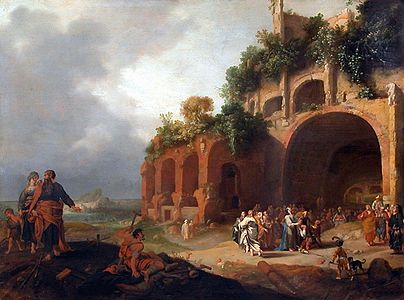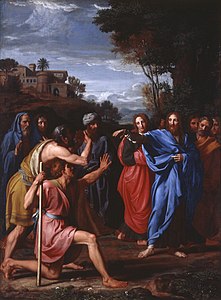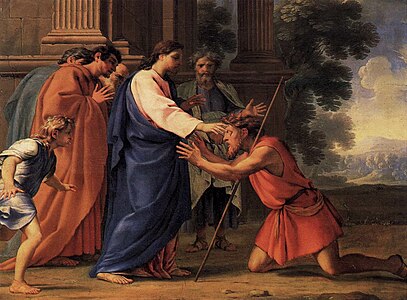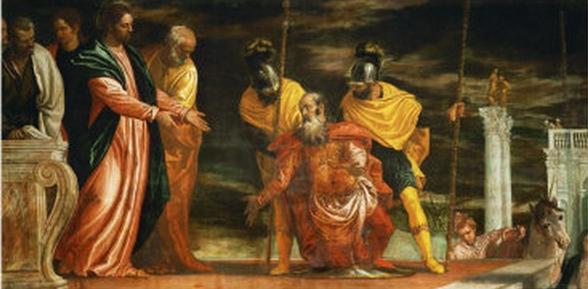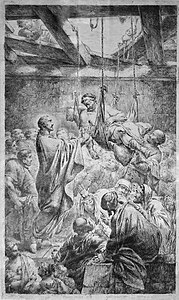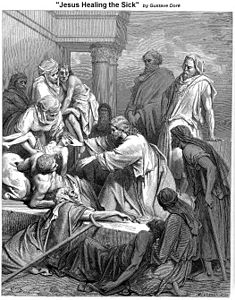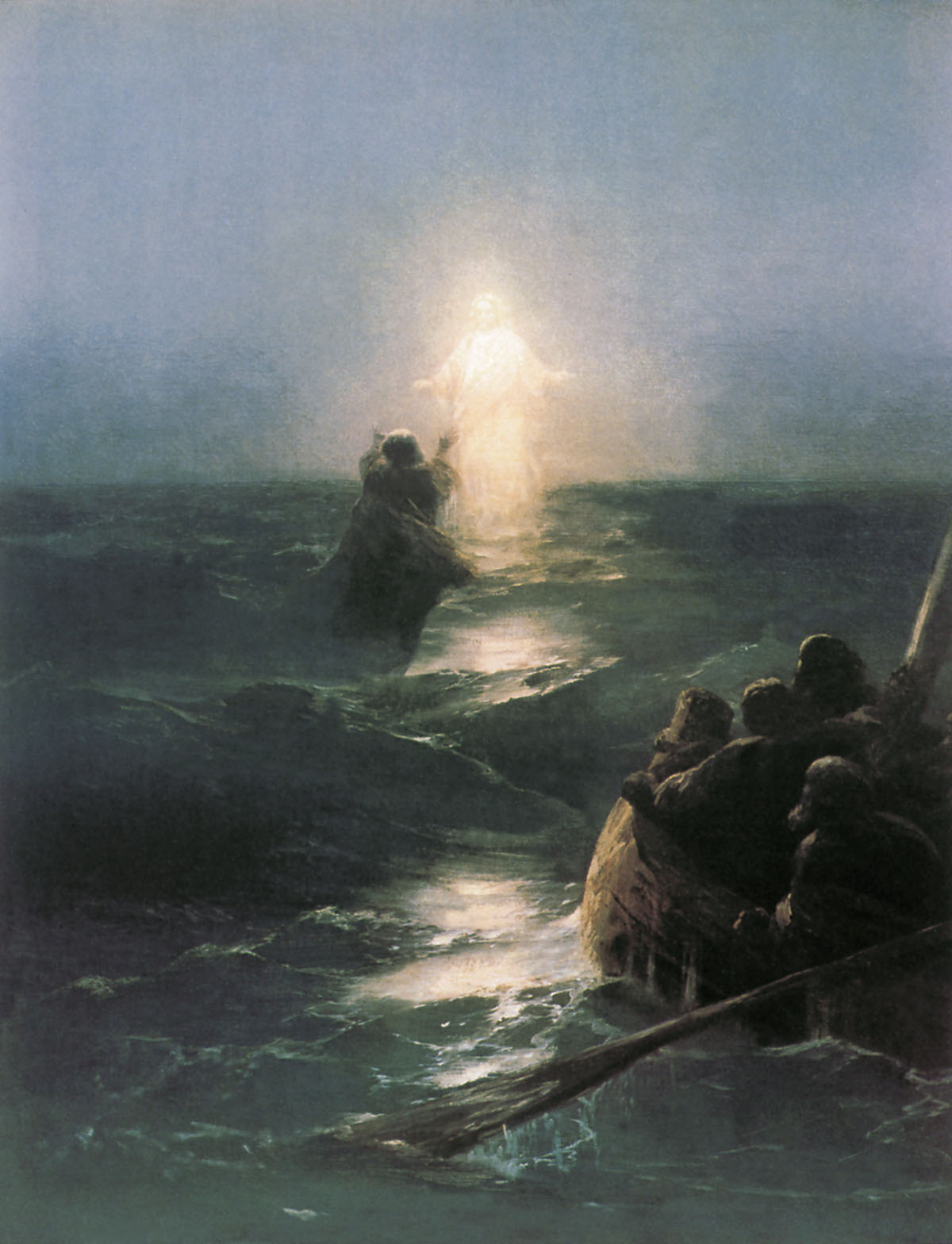
Miracles of Jesus
The miracles of Jesus are miraculous deeds attributed to Jesus in Christian and Islamic texts. The majority are faith healings, exorcisms, resurrections, and control over nature.[1][2]
In the Gospel of John, Jesus is said to have performed seven miraculous signs that characterize his ministry, from changing water into wine at the start of his ministry to raising Lazarus from the dead at the end.[3]
For many Christians and Muslims, the miracles are believed to be actual historical events.[4][5][6] Others, including many liberal Christians, consider these stories to be figurative.[a]
Since the Age of Enlightenment, many scholars have taken a highly skeptical approach to claims about miracles,[7] with less consensus than in former times.[8] Non-religious historians commonly avoid commenting on the veracity of miracles as the sources are limited and considered problematic.[9] Some scholars rule out miracles altogether while others defend the possibility, either with reservations or more strongly[8] (in the latter case commonly reflecting religious views).[9]
List of miracles found outside the New Testament[edit]
The Book of Mormon[edit]
The Book of Mormon, one of the religious texts of the Church of Jesus Christ of Latter-day Saints,[40] records multiple miracles performed by Jesus. Sometime shortly after his Ascension, the Book of Mormon records that Jesus miraculously descends from heaven and greets a large group of people who immediately bow down to him. Jesus offers this invitation: "Arise and come forth unto me, that ye may thrust your hands into my side, and also that ye may feel the prints of the nails in my hands and in my feet, that ye may know that I am the God of Israel, and the God of the whole earth, and have been slain for the sins of the world" 3 Nephi 11:8–17.
In addition to descending from heaven, other miracles of Jesus found in the Book of Mormon include the following:
Setting and interpretations[edit]
Cultural background[edit]
Miracles were widely believed in around the time of Jesus. Gods and demigods such as Heracles (better known by his Roman name, Hercules), Asclepius (a Greek physician who became a god) and Isis of Egypt all were thought to have healed the sick and overcome death (i.e., to have raised people from the dead).[42] Some thought that mortal men, if sufficiently famous and virtuous, could do likewise; there were myths about philosophers like Pythagoras and Empedocles calming storms at sea, chasing away pestilences, and being greeted as gods,[42] and similarly some Jews believed that Elisha the Prophet had cured lepers and restored the dead.[42] The achievements of the 1st century Apollonius of Tyana, though occurring after Jesus's life, were used by a 3rd-century opponent of the Christians to argue that Christ was neither original nor divine (Eusebius of Caesaria argued against the charge).[43]
The first Gospels were written against this background of Hellenistic and Jewish belief in miracles and other wondrous acts as signs—the term is explicitly used in the Gospel of John to describe Jesus's miracles—seen to be validating the credentials of divine wise men.[44]
Traditional Christian interpretation[edit]
Many Christians believe Jesus's miracles were historical events and that his miraculous works were an important part of his life, attesting to his divinity and the Hypostatic union, i.e., the dual natures of Jesus as God and Man.[45] They see Jesus's experiences of hunger, weariness, and death as evidences of his humanity, and miracles as evidences of his divinity.[46][47][48]
Christian authors also view the miracles of Jesus not merely as acts of power and omnipotence, but as works of love and mercy, performed not with a view to awe by omnipotence, but to show compassion for sinful and suffering humanity.[45][49] And each miracle involves specific teachings.[50]
Since according to the Gospel of John,[51] it was impossible to narrate all of the miracles performed by Jesus, the Catholic Encyclopedia states that the miracles presented in the Gospels were selected for a twofold reason: first for the manifestation of God's glory, and then for their evidential value. Jesus referred to his "works" as evidences of his mission and his divinity, and in John 5:36 he declared that his miracles have greater evidential value than the testimony of John the Baptist.[45] John 10:37–38 quotes Jesus as follows:[52]

